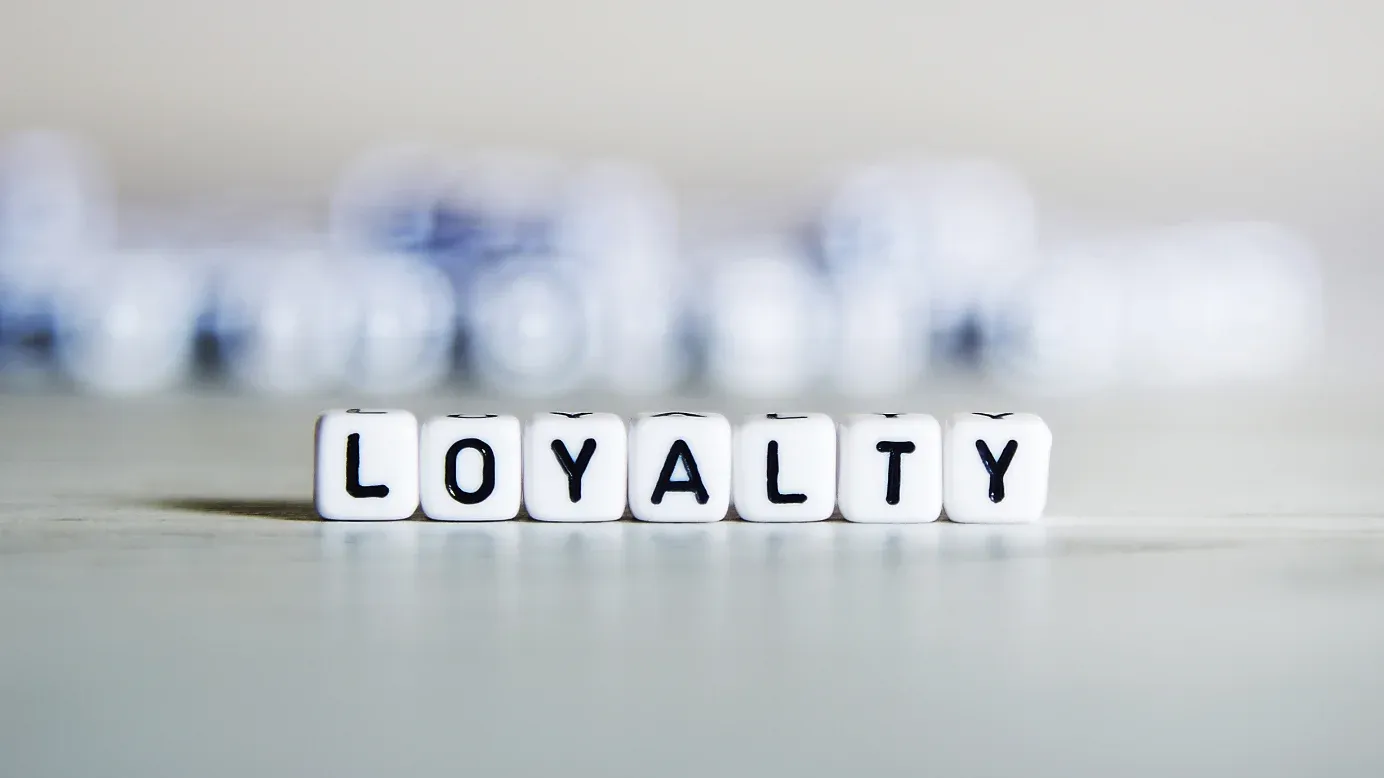On this page
Building customer loyalty isn’t just a nice-to-have for retailers—it’s a powerful driver of business growth. According to a Bain & Company study, increasing client retention rates by just 5% can boost earnings by 25%–95%. Moreover, 79% of U.S. consumers are more likely to stay with brands that offer loyalty programs. These numbers highlight why loyalty programs have become a cornerstone of retail success.
In this guide, we’ll uncover how retail loyalty programs can not only strengthen customer relationships but also fuel sustained business growth. Discover actionable strategies to create loyalty programs that truly make an impact.
What is a loyalty program in retail?
Retail loyalty programs are structured marketing strategies designed to encourage customers to continue shopping at or using the services of businesses associated with each program. These programs offer various incentives such as discounts, exclusive offers, points, and rewards that encourage repeat purchases.
In essence, they aim to convert occasional shoppers into loyal customers. Customers always want loyalty programs that are- seamless to use (53% of respondents), offer huge discounts (39%), and easy to understand (37%).
The importance of retail loyalty programs is further emphasized by statistics from Statista, which found nearly 58% of American shoppers who pay for loyalty memberships expect free shipping and no minimum order requirements. This shift in consumer behavior makes loyalty programs not just an added benefit but a crucial part of a retailer's strategy to attract and retain customers.
Key benefits of retail loyalty programs
Here are the key benefits of a customer loyalty program in retail.
1. Increased customer retention
Customer retention is a critical factor in the long-term success of any business. According to Harvard Business Review, increasing customer retention rates by just 5% can lead to an increase in profits by 25% to 95%. Retail loyalty programs play a significant role in boosting retention by creating a sense of value and appreciation among customers.
For instance, the Colloquy Loyalty Census reports that the average U.S. household is enrolled in 12 loyalty programs but actively participates in only about 4.7. This indicates that while customers are open to joining loyalty programs, engagement is driven by how well the programs meet their needs and expectations.
2. Enhanced customer experience
Retail loyalty programs offer personalized experiences, which are becoming increasingly important to consumers. Accenture found that 91% of consumers are more likely to shop with brands that provide offers and recommendations relevant to them. By leveraging customer data, retailers can tailor their loyalty programs to offer more relevant rewards, thereby enhancing the overall customer experience.
3. Valuable customer insights
Retail loyalty programs generate vast amounts of data that can be used to understand customer behavior, preferences, and spending patterns. This data is invaluable for retailers as it helps them make informed decisions on inventory, marketing, and customer service strategies.
A study by McKinsey & Company revealed that companies using customer analytics extensively are 23 times more likely to outperform competitors in acquiring new customers and nine times more likely to surpass them in customer loyalty.
Most popular types of customer loyalty programs
Customer loyalty programs are essential tools for retailers aiming to foster long-term relationships and enhance customer engagement. Here are five popular types of customer loyalty programs:
1. Points-Based Loyalty Programs
Points-based loyalty programs are one of the simplest and most effective ways to keep customers coming back. Shoppers earn points for every purchase they make, with the amount of points usually tied to how much they spend. The more they shop, the more points they rack up, which they can later trade in for rewards like discounts, free products, or exclusive perks.
But it doesn’t stop there—points programs often reward customers for other actions too. Signing up, referring friends, celebrating milestones like birthdays, or interacting with the brand on social media can also earn points. This approach keeps customers engaged, even outside of their regular shopping trips.
These programs work particularly well for businesses with frequent transactions or consistent product offerings, like groceries or fuel. Plus, they’re easy for customers to understand and offer businesses valuable data about shopping habits.
2. Tiered Loyalty Programs
Tiered loyalty programs take things up a notch by rewarding customers based on their level of engagement. The idea is simple: the more you shop or spend, the better the rewards. These programs are designed to make loyal customers feel extra special by placing them in different tiers, such as bronze, silver, or gold, with each level offering bigger perks.
For example, a customer in the highest tier might get early access to sales, bigger discounts, or free shipping. To keep the excitement alive, some businesses require customers to maintain their spending to stay in their tier, encouraging regular engagement.
These programs work particularly well for brands aiming to deepen relationships with high-spending customers.
3. Partner Retail Loyalty Programs
Why go it alone when you can team up with a like-minded brand? Partner loyalty programs are all about collaboration, where two or more businesses come together to offer shared benefits to their customers. For example, one brand might give out discount coupons for the other, or customers could earn points across both businesses.
The trick here is finding the right partner—someone in the same industry but not a direct competitor. This way, both brands gain value without stepping on each other’s toes.
4. Subscription-Based Loyalty Programs
Subscription-based loyalty programs flip the script by asking customers to pay a fee to join. While this might sound counterintuitive, it works incredibly well for customers who regularly shop with a brand. In exchange for a monthly or yearly fee, members get access to perks like free delivery, exclusive discounts, or even entertainment content.
5. Referral-Based Loyalty Programs
Want more customers? Let your current ones bring them in for you! Referral programs reward existing customers for spreading the word about your brand. The process is simple: a customer recommends your business to a friend, and when the friend signs up or makes a purchase, both get rewarded.
Some programs get creative by introducing milestones. For example, the more friends you refer, the bigger the rewards you unlock. This encourages customers to keep spreading the word.
6. Rewards Loyalty Programs
Unlike points-based systems, rewards programs offer immediate gratification. Customers get instant perks like discounts, freebies, or early access to new products as a “thank you” for their loyalty. This creates a sense of instant appreciation, making customers feel valued from the get-go.
These programs are particularly effective for brands targeting customers who value quick wins. Businesses tailor rewards to align with customer preferences, making the experience personal and memorable. By focusing on immediate value, rewards programs drive satisfaction and encourage repeat visits.
These types of loyalty programs can work wonders when tailored to fit your audience and business model. Whether it’s points, tiers, referrals, or partnerships, the goal is to keep customers engaged and coming back for more.
You can take your rewards strategy to the next level with Loyalife, a versatile platform designed to create customized, impactful loyalty programs that truly resonate with your audience. By blending instant gratification with tailored customer experiences, Loyalife enables businesses to foster deeper connections and drive sustained engagement. Whether it’s creating tiered rewards, exclusive offers, or seamless partnerships, Loyalife empowers you to design loyalty solutions that align perfectly with your business goals.
Discover how Loyalife can transform your customer loyalty strategy—explore the platform today!
How to implement a successful retail loyalty program
Creating a successful retail loyalty program requires more than just offering discounts; it’s about building strong, lasting relationships with your customers. To achieve this, you need a well-thought-out strategy that resonates with your audience and aligns with your business goals. Here are key strategies to design and implement a loyalty program that drives customer engagement and boosts business growth.
Step 1: Define Clear Objectives
Before diving into the details, define what you want your loyalty program to accomplish.
- Are you aiming to increase repeat purchases, attract new customers, or reduce churn?
- Do you want to encourage larger basket sizes or gain insights into shopping behaviors?
Having clear objectives ensures every element of your program contributes to these goals. For example, if your goal is to boost repeat purchases, you might focus on a points-based system that rewards frequency. If customer retention is your priority, a tiered rewards structure with exclusive perks may be more effective.
Step 2: Understand Your Audience
A one-size-fits-all approach rarely works for loyalty programs. Understanding your audience allows you to create a program that feels relevant and valuable.
- Segment your customers based on purchasing behavior, demographics, or preferences.
- Conduct surveys or gather feedback to learn what incentives they find most appealing.
For instance, some customers may value discounts, while others might prefer experiential rewards like early access to sales or VIP events. Use this information to design a program that resonates with different customer segments.
Step 3: Choose the Right Reward Structure
The type of reward structure you choose can make or break your program’s success. Consider options like:
- Points-Based Rewards: Customers earn points for each purchase, which can be redeemed for discounts or products. This system works well for frequent shoppers.
- Tiered Rewards: Introduce levels that customers unlock as they spend more. Each tier offers increasing benefits, incentivizing higher spending and loyalty.
- Exclusive Perks: Provide non-monetary benefits such as free shipping, priority service, or members-only offers. These add emotional value to the program.
- Partnership Rewards: Collaborate with complementary brands to offer rewards like gift cards, travel benefits, or dining discounts, adding variety to the incentives.
Align the reward structure with your target audience’s preferences and your business model for maximum impact.
Step 4: Make It Easy to Join and Use
Simplicity is key to driving participation in your loyalty program.
- Offer an intuitive sign-up process, whether online, via mobile apps, or in-store.
- Minimize the information required at registration to avoid discouraging potential members.
- Allow customers to easily track their points, rewards, or tier status through user-friendly dashboards or apps.
Customers are more likely to engage when they find the program accessible and straightforward.
Step 5: Integrate Technology for a Better Experience
Technology plays a vital role in modern loyalty programs, ensuring they remain efficient and engaging.
- Use AI and machine learning to analyze customer data and offer personalized rewards or recommendations.
- Implement mobile apps or digital wallets to let customers access their loyalty account anytime, anywhere.
- Automate reminders for unused points or expiring rewards to drive engagement and prevent customers from feeling disconnected.
Technology enhances convenience and personalization, two factors critical for program success.
Step 6: Promote Your Loyalty Program Effectively
Even the best-designed loyalty program will fail without proper promotion. You need to actively market it to your target audience.
- Highlight the program on your website and in your physical stores with banners or signage.
- Use email and SMS campaigns to inform existing customers about the benefits of joining.
- Leverage social media to showcase success stories, new rewards, or limited-time offers.
For added impact, consider launching your program with a special incentive, such as bonus points or an introductory discount, to encourage sign-ups.
Step 7: Monitor and Evolve Your Program
Customer preferences and market conditions change over time, so your loyalty program should too.
- Regularly review data on program participation, reward redemption rates, and customer feedback.
- Use this data to refine the program, whether by adding new tiers, updating rewards, or enhancing the user experience.
- Introduce seasonal promotions or limited-time bonuses to keep customers engaged and excited.
A stagnant program risks losing relevance, while regular updates demonstrate your commitment to delivering value.
Step 8: Focus on Emotional Loyalty
Successful loyalty programs go beyond transactional rewards to create an emotional connection with customers.
- Recognize loyal customers publicly, such as through social media shoutouts or in-store acknowledgments.
- Offer rewards for non-purchase activities like sharing reviews, referring friends, or following your brand online.
- Create exclusive experiences, like VIP events or early access to products, to make loyal customers feel valued.
When customers feel emotionally connected to your brand, they’re more likely to remain loyal even in a competitive market.
Retail loyalty program best practices
Crafting a retail loyalty program requires more than rewards; it’s about delivering value and building meaningful customer connections. Here are key practices to ensure success:
1. Keep the Program Simple and Intuitive
Ensure your loyalty program is easy for customers to understand and use. Complicated rules or reward structures can deter participation, so focus on creating a straightforward system for earning and redeeming rewards.
2. Personalize Rewards to Customer Preferences
Leverage customer data to offer personalized incentives that resonate with individual preferences. For example, send targeted discounts or exclusive offers based on past purchases or browsing history.
3. Offer Multiple Engagement Channels
Provide customers with several ways to interact with your loyalty program. Include options like a dedicated mobile app, website access, and in-store integration to ensure convenience and accessibility.
4. Promote Consistent Communication
Engage with loyalty program members regularly through emails, SMS, or push notifications. Highlight upcoming rewards, special offers, and updates to maintain excitement and keep your program top-of-mind.
5. Continuously Monitor and Optimize
Track key performance metrics, such as redemption rates and customer engagement levels, to evaluate your program’s success. Use feedback and data analysis to refine your strategy and introduce updates or new features as needed.
Implementing these best practices ensures your loyalty program remains relevant, engaging, and valuable for both your customers and your business.
Examples of companies with the best retail loyalty programs
Below are examples of companies with successful retail loyalty programs:
1. Retail Chain in Riyadh
A leading retail chain in Riyadh transformed customer retention with a tailored loyalty program powered by Loyalife. The program focused on creating personalized rewards and seamless customer engagement.
Key Features of the Loyalty Program:
- Points for Purchases: Customers earn points for every Riyal spent, redeemable for discounts, exclusive products, or services.
- Customized Offers: Leveraging advanced analytics, the program delivered targeted promotions based on shopping habits, increasing relevance and engagement.
- Exclusive Perks: VIP members enjoyed priority checkout, early access to sales, and invitations to exclusive events.
- Digital Integration: The program was managed through a user-friendly app, enabling customers to track points, redeem rewards, and explore offers effortlessly.
Impact of the Loyalty Program
The tailored loyalty program drove remarkable results for the retail chain. Customer retention rates soared, with repeat visits increasing by 35%. Average spending per customer grew significantly, while positive feedback highlighted enhanced customer satisfaction. By leveraging Loyalife, the retail chain not only strengthened its relationship with existing customers but also attracted new ones, cementing its position as a market leader in Riyadh’s retail sector.
2. Kohl's rewards
Kohl's is an American department store retail chain and has a standout customer loyalty program in the retail industry. Members of Kohl's Rewards, a straightforward but efficient program, receive 5% Kohl's Cash for each transaction they make, regardless of the total amount spent. With Kohl's Cash, shoppers can effectively get money back on their purchases because it is awarded in $5 increments and can be redeemed within specific timeframes.
Key features of Kohl's Rewards include:
- Earnings: With each purchase, members receive 5% in Kohl's Cash.
- Redemption: During the specified redemption periods, Kohl's Cash is automatically applied to the member's account.
- Special Offers: Throughout the year, members get exclusive discounts and offers, such as a birthday present.
- Convenience: Members can effortlessly monitor their earnings, prizes, and special offers thanks to the program's integration with the Kohl's app.
Impact on the company
Kohl's Rewards has improved client retention and encouraged repeat business, which has greatly improved the company's success. Enrolling millions of customers, the program guarantees steady cash sources. Customized promotions and special discounts increase client happiness and strengthen loyalty, and the easy connection with Kohl's app boosts user interaction.
3. Lululemon Sweat Collective
Lululemon is a seller of yoga pants and other yoga clothing and has now grown to include athletic wear and lifestyle clothing. Lululemon Sweat Collective is a special loyalty program designed exclusively for fitness professionals and community leaders. Fitness instructors, personal trainers, athletes, and wellness professionals who encourage their communities to lead active, healthy lifestyles are the target audience for the Lululemon Sweat Collective program.
Important elements of the program consist of:
- Exclusive Savings: Lululemon goods, both in-store and online, are discounted by 25% for members.
- Early Access: When new products and exclusive collections are released, members get first access.
- Community Events: Lululemon hosts training sessions, workshops, and exclusive events that are exclusive to members alone.
- Opportunities for Networking: The programme creates a supportive community by connecting fitness professionals.
- Access to Resources: To assist members in expanding their fitness companies, members get access to instructional materials and resources.
Impact on the company
Through invitation-only events and networking opportunities, the program strengthens relationships with the fitness community and improves community participation. The discounts stimulate members' regular purchases, influence their customers and followers, and push sales growth. Furthermore, Lululemon benefits from the insightful feedback provided by fitness professionals, which helps the company improve its products and stay ahead of market trends.
4. IKEA Family
The global home furnishing brand IKEA incorporates the IKEA Family a well-regarded customer loyalty program designed to enhance the shopping experience for customers. The program aims to build consumer loyalty and encourage frequent visits to IKEA stores by providing a variety of exclusive benefits and discounts. Joining the IKEA Family program is free, and members receive a number of benefits.
Key traits of the program consist of:
- Monthly offers: Special monthly savings on a range of goods.
- Events and workshops: Entry to seminars, workshops, and events exclusively for members.
- Extended product guarantees: Better coverage than the normal guarantee on a few chosen products.
- Benefits of protection: Free protection against unintentional damage to some products bought with an IKEA Family card.
- Prize draws: You can win IKEA gift cards by automatically entering regular prize draws.
Impact on the company
By providing unique discounts and improving the shopping experience with additions like free coffee and special events, the IKEA Family program has dramatically increased by 150 million members and brought customer retention and sales. The initiative fosters a sense of community among participants, increases brand loyalty, and promotes return visits.
5. The North Face XPLR Pass
The North Face has been a leader in outdoor performance clothing and gear for hiking, camping, and other adventures. The North Face XPLR Pass is a loyalty program that prioritizes encouraging outdoor exploration and sustainability over standard rewards. Members will receive rewards for their purchases and outdoor activities with the XPLR Pass.
Key features include:
- Points system: In addition to making purchases, members can accrue points by going on outdoor activities including hiking, camping, and environmental volunteer work.
- Exclusive rewards: You can exchange points for merchandise, events like outdoor workshops and guided adventures, and gear and clothing.
- Initiatives for sustainability: The program rewards members for taking environmentally responsible actions, such as recycling used equipment or volunteering at cleanup days, to highlight sustainability.
- Community engagement: Participants are members of a group of people who are passionate about the great outdoors and environmental conservation.
Impact on the company
The program's emphasis on sustainability and exploration is consistent with The North Face's basic principles, which improves the company's reputation and strengthens its relationship with clients. By using a point-based rewards system, this strategy not only boosts sales but also builds brand advocacy and loyalty and brought a +54% increase over monthly website traffic.
6. Patagonia Worn Wear
Patagonia is a clothing brand and is a special loyalty program for worn wear that encourages users to recycle, repair, and reuse their clothing and equipment to promote sustainability. This program is in line with Patagonia's dedication to protecting the environment and minimizing waste in the clothing sector.
Key features of the program include:
- Repair Services: To prolong the life of worn-out or broken apparel and equipment, Patagonia offers repair services.
- Trade-In Program: Through the "Trade-Up" program, customers can exchange their worn Patagonia apparel and equipment for store credit.
- Certified Recycled Collection: It promotes sustainable consumption by providing a selection of goods manufactured from recycled materials.
- Worn Wear Events: Patagonia arranges classes for its clients to learn about sustainable practices and repair methods.
Impact on the company
The program extends the life cycle of products and lessens the impact on the environment through certified recycled collecting. Environmentally conscious consumers are more engaged and loyal as a result of this effort. In addition, Worn Wear serves as a platform for sustainable practice teaching and makes money through the sale of recycled goods and repair services. In its first year of business, Worn Wear sold more Patagonia products than eBay.
All things considered, the program upholds Patagonia's core principles, improves client interactions, and establishes a standard for environmentally friendly efforts in the clothing sector.
7. Macy's Star Rewards
Macy's Star Rewards is another holistic customer loyalty program in retail that offers a variety of benefits and prizes in an effort to improve the shopping experience for Macy's consumers. The program's objectives are to boost spending and customer retention while offering tailored incentives to promote return business.
Key features of the program include:
- Tiers: Three tiers comprise silver, gold, and platinum which are divided according to annual spending levels.
- Points earning: Members accrue points for making eligible in-person and online purchases.
- Exclusive perks: Every tier comes with exclusive perks like free shipping, birthday offers, and unexpected savings days.
- Star money: Members can use Star Money, which can be redeemed at Macy's just like cash.
- Benefits: Extra benefits include free purchase adjustments, entry to member-only specials, and bonus events.
Impact on the company
The Macy's Star Rewards program, which offers tiers of benefits to encourage larger spending, has increased customer retention and sales dramatically. Special benefits, including bonus events and birthday offers, improve the shopping experience and encourage customer loyalty. In 2021, Macy’s loyalty program accounted for over 70% of its purchases.
In addition to increasing transaction frequency, the program's structure offers useful information for inventory management and targeted marketing campaigns. Macy's Star Rewards increases competition, fortifies brand loyalty, and promotes steady growth in the retail market.
8. Barnes & Noble
By offering several advantages and special deals, the Barnes & Noble membership program is a loyalty program designed to improve the bookstore's relationship with its customers. The goal of this program is to entice readers and regular customers to come back to Barnes & Noble for their enjoyment and reading needs.
Key features of the program include:
- Exclusive to members offers: All year long, exclusive savings and promotions, like bonus coupons and unique sales occasions.
- Free express shipping: There is no minimum purchase requirement for members to take advantage of free express shipping on online shopping.
- Benefits of the café: Snacks and beverages are included in special discounts and savings.
- Early access: Members can get their hands on highly sought-after books before they sell out, thanks to early access to new releases and best-selling titles.
- Birthday offer: As an expression of gratitude to you, a unique birthday voucher or offer is given.
Impact on the company
The Barnes & Noble Membership Program offers free delivery, early access to new releases, and exclusive discounts to increase consumer loyalty and engagement. This promotes return business and repeat purchases, which enhances revenue and client retention. In addition, the program offers insightful data that helps with strategic marketing and inventory choices. It enhances Barnes & Noble's competitive position by providing special advantages that appeal to book lovers and improve the whole buying experience.
9. Gap Good
Gap is an American clothing and accessories retailer; the goal of the Gap Good Rewards program is to increase consumer loyalty by providing customized prizes, special benefits, and environmental efforts. This program demonstrates Gap Inc.'s dedication to ethical business conduct and sustainability while offering its devoted clientele value.
Key features of the program include:
- Sustainability initiatives: Members can take part in environmentally beneficial activities, such as choosing to get digital receipts or recycling their old clothes.
- Donations to charitable causes: A percentage of member purchases is donated to a number of nonprofit organizations by the program in support of charitable causes.
- Special events: Invitations to exclusive shopping occasions and neighborhood events that support social responsibility and sustainability.
- Flexible redemption: Points can be contributed to a charitable organization or redeemed for savings on subsequent purchases.
Impact on the Company
Gap Inc. not only drives sales but also strengthens its brand reputation among socially conscious consumers. The program's community-building events and data-driven insights further contribute to strategic marketing efforts and competitive advantage in the retail market. Overall, Gap Good Rewards underscores Gap Inc.'s commitment to customer satisfaction, sustainability, and responsible business practices.
10. CVS ExtraCare
CVS is a retail pharmacy chain, and among the retail pharmacy industry's biggest and most popular loyalty programs is CVS ExtraCare. ExtraCare is a program designed to provide substantial discounts and benefits to regular clients of CVS Pharmacy. It also fosters excellent customer relations by encouraging repeat business and boosting consumer loyalty.
Key features of the program include:
- Earnings on transactions: Almost all transactions earn members 2% in ExtraBucks Rewards, which they may use to redeem cash for future purchases.
- ExtraSavings: Members receive exclusive coupons and customized offers straight through the CVS app, which they may print at the in-store coupon center.
- Pharmacy & Health rewards: For each ten prescriptions filled, ExtraCare members who sign up for the ExtraCare Pharmacy & Health Rewards programme receive $5 ExtraBucks Rewards.
- Beauty club: For every $30 spent on beauty products, members receive $3 in ExtraBucks Rewards.
- Exclusive to members promotions: Extra savings chances and entry to member-only sales events.
Impact on the Company
Through focused incentives, the program increases sales volume, particularly in the areas of pharmaceutical services and cosmetic items. Strategic marketing and stocking decisions are informed by valuable customer information obtained from ExtraCare transactions. The loyalty program brings 74 million members who are provided with a variety of rewards. ExtraCare bolsters CVS's competitive advantage, encourages customer loyalty and promotes steady growth in the retail pharmacy sector.
11. Nordstrom Rewards
Leading fashion store Nordstrom, Inc. offers stylish apparel, accessories, and shoes for men, women, and children and has one of the most effective customer loyalty programs in the retail sector.
The four primary tiers of Nordstrom Rewards are determined by annual spending:
- Member: All clients who register for the program are eligible to access the entry-level tier. Every dollar spent earns a member one point.
- Influencer: A customer must spend $500 or more a year to be eligible for this tier, which awards two points for every dollar spent.
- Ambassador: Customers who spend $5,000 a year get into this category, where they are awarded three points for every dollar spent.
- Icon: The top tier, which is only available to users who spend $15,000 or more a year, awards four points for every dollar spent.
Nordstrom Notes, which are effectively shop credits that may be used for future purchases, can be obtained by exchanging points earned through purchases. Members receive rewards like early access to the annual Nordstrom Anniversary Sale, special offers, complimentary basic changes, and doorstep delivery in addition to point accumulation.
Impact on the company
The Nordstrom Rewards program has greatly enhanced the company's performance. More than half of all sales (70%) come from members, demonstrating how well the program works to increase spending and repeat business. Increased annual spending is encouraged by the tiered system, which boosts revenue.
Personalized retail loyalty made easy with Loyalife
Loyalife empowers retailers to create impactful loyalty programs that connect with customers across channels. By integrating online and offline touchpoints, Loyalife helps retailers deliver seamless, personalized experiences that drive engagement and repeat business.
Key Features for Retail Success:
- Unified Multi-Channel Programs: Offer rewards and insights across online platforms and physical stores to build a consistent customer experience.
- Seamless Offline Integration: Manage store-level offers and loyalty programs effortlessly, bridging the gap between digital and in-store shopping.
- Targeted Engagement: Send personalized offers and discounts via email or SMS, ensuring customers feel valued and connected.
- Mobile-Centric Loyalty: Integrate mobile apps to enhance customer convenience and engagement, creating loyalty programs accessible anytime, anywhere.
Loyalife equips retailers to meet modern challenges, turning loyalty programs into a strategic advantage that deepens customer connections and fosters growth.
Connect with our loyalty experts for a free demo to understand how Loyalife can help you launch engaging customer loyalty programs globally.
Conclusion
Retail loyalty programs are an indispensable tool for driving customer loyalty and business growth in the United States.
By offering personalized rewards, leveraging technology, and continuously refining the program, retailers can build stronger relationships with their customers and secure a competitive edge in the market.
Whether you’re a small business or a large retailer, investing in a well-designed loyalty program can lead to significant returns in customer retention and sales.
1. What are the benefits of loyalty programs for retailers?
These programs increase customer retention, enhance brand loyalty, and provide actionable data on purchasing trends, helping retailers improve their marketing strategies and grow revenue.
2. How do retail store loyalty programs work?
Retail store loyalty programs typically allow customers to earn points, discounts, or perks for shopping regularly. Customers can redeem these rewards for exclusive benefits, encouraging continued engagement.
3. What are the best retail loyalty programs currently available?
The best retail loyalty programs are those that offer personalized rewards, seamless digital access, and clear value, making them appealing and easy to use for customers.
4. How can customer loyalty programs in retail drive business growth?
Customer loyalty programs in retail encourage repeat purchases, increase average spending, and build a loyal customer base that advocates for the brand, driving organic growth.
5. What are the benefits of retail loyalty rewards programs for customers and businesses?
For customers, these programs provide value through rewards and exclusive offers. For businesses, they improve customer retention, increase sales, and provide valuable insights into consumer behavior.
6. What should I include in the best loyalty programs for retail?
Successful programs include clear rewards structures, personalized offers, tiered benefits, and easy enrollment processes to keep customers engaged and satisfied.
7. What role does retail loyalty program software play in program success?
Retail loyalty program software streamlines operations by automating reward tracking, customer segmentation, and data analysis, ensuring a seamless experience for both businesses and customers.
8. How do loyalty programs for retailers stay relevant in today’s market?
Retailers must adapt loyalty programs by integrating digital solutions, offering personalized rewards, and maintaining customer engagement through regular communication and updates.
9. What are the challenges of implementing loyalty programs in retail?
Challenges include ensuring easy adoption, maintaining customer interest, and balancing program costs with the benefits provided to customers.









